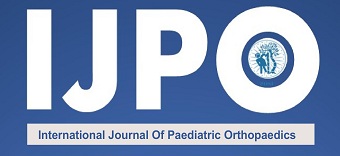Radiological Assessment and Planning of Deformities
Volume 10 | Issue 2 | May-August 2024 | Page: 12-17 | Sudhanshu Bansal, Gaurav Gupta, Deepak Khurana
DOI- https://doi.org/10.13107/ijpo.2024.v10.i02.184
Submitted: 05/03/2024; Reviewed: 02/04/2024; Accepted: 15/05/2024; Published: 10/08/2024
Authors: Sudhanshu Bansal MS Ortho [1], Gaurav Gupta MS Ortho [2], Deepak Khurana MS Ortho [3]
[1] Department of Paediatric Orthopaedic Surgery, CODS Clinic, Ludhiana, Amandeep Hospital, Amritsar, Punjab, India.
[2] Department of Paediatric Orthopaedic Surgery, Child Ortho Clinic, Delhi-NCR, India.
[3] Department of Paediatric Orthopaedic Surgery, JCPODS, Jeevan Rekha hospital, Jaipur, Rajasthan, India.
Address of Correspondence
Dr. Sudhanshu Bansal,
Consultant, Paediatric Orthopaedic Surgeon, CODS Clinic, Ludhiana, Amandeep Hospital, Amritsar, Punjab, India.
E-mail: drbansalsudhanshu@gmail.com
Abstract
Deformity correction is a fundamental aspect of orthopedic surgery, requiring a precise radiological assessment and systematic planning. This article provides an indepth overview of the radiological modalities available for deformity assessment, including X-rays, scannograms, computed tomography (CT), and magnetic resonance imaging (MRI). Proper radiographic techniques, such as standing fulllength X-rays and scannograms, are critical for accurate limb alignment assessment. Advanced imaging modalities, including CT and MRI, are necessary in cases of complex deformities or rotational abnormalities. Furthermore, various software applications are available for preoperative deformity planning, enabling precise correction strategies. This article also addresses approaches for managing deformities in limited-resource settings, emphasizing cost-effective and accessible imaging techniques. The objective is to enhance clinical decisionmaking and optimize surgical outcomes in deformity management.
Keywords: Alignment, Anatomic tibiofemoral angle, Deformity, Knee, Lower limb alignment, Mechanical axis angle, Radiography
References
1. Sabharwal, S.; Zhao, C.; McKeon, J.; Melaghari, T.; Blacksin, M.; Wenekor, C. Reliability analysis for radiographic measurement of limb length discrepancy: Full-length standing anteroposterior radiograph versus scanogram. J. Pediatr. Orthop. 2006, 27, 46–50.
2. Sheehy, L.; Cooke, T.D.V. Radiographic assessment of leg alignment and grading of knee osteoarthritis: A critical review. World J. Rheumatol. 2015, 5, 69–81.
3. Marques Luís, N.; Varatojo, R. Radiological assessment of lower limb alignment. EFORT Open Rev. 2021, 6, 487–494.
4. Paley, D. Radiographic assessment of lower limb deformities. In Principles of Deformity Correction; Paley, D., Ed.; Springer: Berlin/Heidelberg, Germany, 2002; pp. 31–60.
5. Zampogna, B.; Vasta, S.; Amendola, A.; Uribe-Echevarria Marbach, B.; Gao, Y.; Papalia, R.; Denaro, V. Assessing Lower Limb Alignment: Comparison of Standard Knee Xray vs Long Leg View. Iowa Orthop. J. 2015, 35, 49–54.
6. Hinterwimmer, S.; Graichen, H.; Vogl, T.J.; Abolmaali, N. An MRI-based technique for assessment of lower extremity deformities-reproducibility, accuracy, and clinical application. Eur. Radiol. 2008, 18, 149–1505.
7. Winter, A.; Ferguson, K.; Syme, B.; McMillan, J.; Holt, G. Pre-operative analysis of lower limb coronal alignment—A comparison of supine MRI versus standing full-length alignment radiographs. Knee 2014, 21, 1084–1087.
8. Zahn, R.K.; Renner, L.; Perka, C.; Hommel, H. Weight-bearing radiography depends on limb loading. Knee Surg. Sport. Traumatol.Arthrosc. 2019, 27, 1470–1476.
9. Tarassoli, P.; Corban, L.E.; Wood, J.A.; Sergis, A.; Chen, D.B.; MacDessi, S.J. Long leg radiographs underestimate the degree of constitutional varus limb alignment and joint line obliquity in comparison with computed tomography: A radiographic study. Knee Surg. Sports Traumatol. Arthrosc. 2023, 31, 4755–4765.
10. Sabharwal, S.; Zhao, C.; Edgar, M. Lower limb alignment in children: Reference values based on a full-length standing radiograph. J. Pediatr. Orthop. 2008, 28, 740–746.
11. Krackow K. The measurement and analysis of axial deformity at the knee. Mahwah, NJ: Homer Stryker Center, 2008.
12. Solomin, L.N.; Utekhin, A.I.; Vilenskiy, V.A. Reference values of the femur and tibia mechanical axes and angles in the sagittal plane, determined on the basis of three-dimensional modeling. J. Limb Lengthen Reconstr. 2020, 6, 116–120.
13. Guggenberger, R.; Pfirrmann, C.W.; Koch, P.P.; Buck, F.M. Assessment of lower limb length and alignment by biplanar linear radiography: Comparison with supine CT and upright fulllength radiography. AJR Am. J. Roentgenol. 2014, 202, W161–W167
14. Fürmetz, J.; Sass, J.; Ferreira, T.; Jalali, J.; Kovacs, L.; Mück, F.; Degen, N.; Thaller, P.H. Three-dimensional assessment of lower limb alignment: Accuracy and reliability. Knee 2019, 26, 185–193.
15. Ahrend, M.D.; Baumgartner, H.; Ihle, C.; Histing, T.; Schröter, S.; Finger, F. Influence of axial limb rotation on radiographic lower limb alignment: A systematic review. Arch. Orthop. Trauma Surg. 2022, 142, 3349–3366.
16. Buck FM, Guggenberger R, Koch pp, Pfirrmann CWA. Femoral and tibial torsion measurements with 3D models based on low-dose biplanar radiographs in comparison with standard CT measurements. AJR Am J Roentgenol 2012;199:W607–W612.
17. Kuiper, R.J.A.; Seevinck, P.R.; Viergever, M.A.; Weinans, H.; Sakkers, R.J.B. Automatic Assessment of Lower-Limb Alignment from Computed Tomography. J. Bone Jt. Surg. Am. 2023, 105, 700–712.
18. Simon, S.; Schwarz, G.M.; Aichmair, A.; Frank, B.J.H.; Hummer, A.; DiFranco, M.D.; Dominkus, M.; Hofstaetter, J.G. Fully automated deep learning for knee alignment assessment in lower extremity radiographs: A cross-sectional diagnostic study. Skeletal Radiol. 2022, 51, 1249– 1259.
| How to Cite this Article: Bansal S, Gupta G, Khurana D | Radiological Assessment and Planning of Deformities | International Journal of Paediatric Orthopaedics | May-August 2024; 10(2): 12-17. https://doi.org/10.13107/ijpo.2024.v10.i02.184 |
